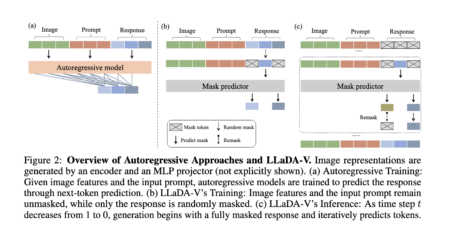

In the rapidly evolving field of digital communication, traditional text-to-speech (TTS) systems have often struggled to capture the full range of human emotion and nuance. Conventional systems tend to “read” text in a flat, unvarying tone, missing the subtle inflections and emotional cues that make human speech so engaging. This shortfall poses a challenge for developers and content creators alike, who seek to deliver messages in a manner that truly resonates with their audience. The need for a TTS system that can interpret context and emotion—rather than simply converting text into speech—has been clear for some time, paving the way for new approaches to voice synthesis.
Hume’s Octave TTS represents a measured advancement in the realm of text-to-speech. Unlike earlier models that mechanically produce speech, Octave is designed to understand the context behind the text it processes. It is not merely about the literal conversion of words into sound; it is about conveying the subtleties of meaning, emotion, and style. Whether a piece of text requires a hint of sarcasm, a gentle whisper, or a firm declaration, Octave adjusts its output to better reflect the intended tone. This capability allows for the generation of custom AI voices that are tailored to fit a wide range of scenarios, from straightforward narration to more character-driven storytelling.
Technical Details
Octave TTS is built on the state-of-the-art large language model (LLM) that has been specifically trained for speech synthesis. This technical foundation enables the system to predict not only the words that should be spoken but also how they should be delivered—taking into account rhythm, timbre, and cadence. One of the notable features of Octave is its “Voice Design” function. With this tool, users can provide a simple script or even just descriptive prompts to generate a voice that suits a particular role or character. For example, one might request a voice reminiscent of a patient counselor or a more assertive narrator, and Octave adapts accordingly.
In addition to Voice Design, Octave also offers “Acting Instructions,” which allow users to fine-tune the emotional delivery of a speech segment. A single line can be rendered in multiple styles—whispered, calm, or even carrying a hint of disdain—depending on the instruction given. This flexibility extends the practical utility of Octave TTS, making it applicable across various domains such as education, entertainment, and customer service. Looking ahead, the team at Hume is also preparing to introduce a Voice Cloning feature, which will enable the replication of a specific voice using only a brief audio sample.

Data Insights and Comparative Evaluations
The development and evaluation of Octave TTS have been carried out with a focus on both technical merit and practical application. In an internal study involving 180 human raters, Octave was compared with an established competitor in the TTS field. Participants evaluated voice samples based on audio quality, naturalness, and fidelity to the provided voice description across 120 diverse prompts. The findings showed that Octave was preferred for audio quality in approximately 71.6% of the trials, for naturalness in about 51.7% of the cases, and for matching the intended description in roughly 57.7% of the assessments.
These results suggest that Octave not only produces clear and pleasant audio but also better aligns with the stylistic and emotional expectations of the user. In tandem with these internal tests, Hume has launched the Expressive TTS Arena, a public initiative designed to foster a broader evaluation of expressive speech synthesis. This platform invites the community to test and compare various TTS systems using longer, more nuanced text samples, thereby helping to refine the performance of models like Octave over time.

Conclusion
Hume’s Octave TTS offers a thoughtful improvement over conventional text-to-speech systems by focusing on context, emotion, and flexibility in voice generation. Its ability to interpret and deliver subtle emotional cues allows for a more natural and engaging auditory experience, making it a useful tool for a variety of applications. The technical foundation of Octave, built on an advanced large language model, ensures that the generated speech is not only clear but also reflective of the deeper meaning behind the text.
The internal evaluations and public testing initiatives underscore Octave’s potential to set a new standard in expressive TTS without resorting to overly dramatic claims. Instead, the focus is on practical enhancements that benefit both developers and end users. As the system continues to evolve—with upcoming features such as Voice Cloning on the horizon—Hume remains dedicated to refining AI voice technology in a way that is both technically sound and sensitive to the nuances of human communication.
Check out the Technical Details. All credit for this research goes to the researchers of this project. Also, feel free to follow us on Twitter and don’t forget to join our 80k+ ML SubReddit.
The post Hume Introduces Octave TTS: A New Text-to-Speech Model that Creates Custom AI Voices with Tailored Emotions appeared first on MarkTechPost.
Source: Read MoreÂ





